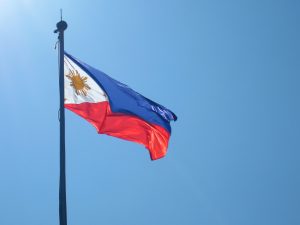On the eve of New Year’s Day 2016, communist guerrillas in Agusan del Sur released Army Corporal Adriano Bingil, whom they had abducted and held captive for 102 days, to then Davao City mayor and presidential aspirant Rodrigo Duterte.
In the presence of a few local politicians and a peace advocate, Duterte vowed that if voted into office, he would prioritize the search for peace and work for social healing and reconciliation. He said, ”You cannot promote peace in this country by remaining divisive… You know, if you are full of anger and harboring hate, how can you build a nation?”
The handover of Bingil to Duterte was seen as the rebels’ veiled endorsement of his candidacy, a message that the tough-talking mayor is a “friend,” hence someone who could dance in step with the guerrillas in resolving the decades-long communist rebellion.
Indeed, the pace of peacemaking was encouragingly upbeat at the start of the Duterte presidency, despite the large amounts of blood spilled in his “war on drugs.”
A month after taking office, Duterte put his best foot forward by declaring a unilateral ceasefire in his first State of the Nation Address in July 2016. He also ordered the temporary release of detained rebel leaders so they could take part in a peace process that had been stalled since 2013.
At the resumption of the Norwegian-facilitated peace talks in August, the parties committed to an indefinite ceasefire, albeit unilaterally declared and uncoordinated, but which nonetheless set a good atmosphere for negotiations.
Succeeding meetings would produce a landmark consensus, which included a framework for social and economic reforms, the bedrock of a political settlement, and free land distribution.
By September, the president rolled out the red carpet at Malacañang Palace for a number of communist leaders in a further show of goodwill, while also asking the military to support the peace process.
But as quick as the peace momentum’s buildup, so was the downward spiral to war-footing, due to unresolved differences on the release of political prisoners and the issue of a bilateral ceasefire.
By February 2017, the parties had scrapped their unilaterally declared truce. Enmity was further rekindled with the declaration of martial law in Mindanao to quell the Marawi siege on May 23, 2017; the communist rebels suspected that they, too, were targets of intensified military operations. The stage was set for the parties’ full return to the battlefield.
With presidential prodding, the state’s war machine was quickly mobilized. Red-tagging of peasant, Lumad and progressive groups became the norm, often leading to the extrajudicial killing of targeted personalities. A most recent example is the reported massacre of nine Tumandok leaders who opposed the construction of a dam in Panay, a province in the central Philippines.
The left-wing Makabayan bloc, which has been outspoken on the country’s social, political and economic ills, and recently on the Duterte administration’s failures to effectively respond to the coronavirus pandemic, has been persistently branded as a front for the communist rebellion.
The president and the military then became so fixated with defeating the communist guerrillas before the end of Duterte’s term in 2022 that the antiquated national security mindset dominated even the imposition of health restrictions. Buoyed by continued support from a supposedly popular president, the military ventured further into draconian ways by branding academic institutions like the University of the Philippines as breeding grounds of rebels.
At the same time, the assault on civil liberties has only worsened, with the recent passage of the Anti-Terrorism Act.
Through dialogues carried out in conflict-affected communities in the country, peace advocates have determined that the renewed hostilities brought enormous suffering, especially to the indigenous peoples whose ancestral territories serve as a battleground of government forces and rebels.
Desperation and deprivation pushed many villagers to the fold of either side, weakening the social fabric of communities that are now divided according to their leanings. People have reported harassment from either side, sometimes resulting in civilian deaths. They are gripped by fear and anxiety.
As the drumbeat of war gets louder, civil society is now in the forefront of creating reverberations for peace, beyond the formal peace process between government and the communist rebels. These initiatives are imperative to help protect affected peoples from violence, to seek justice, and to rebuild relations within and among communities.
Even then, civil society recognizes that the greatest imperative is restarting the formal peace process as soon as possible, as war will not resolve the social and economic inequities in the country that underpin the rebellion. A vigorous and broad peace constituency must accompany the parties in that expectedly arduous process to prod them to plod on until a political settlement is reached.
In the last five years, the parties have spoken enough about how they seek to build peace in the country. The challenge now, as before, is translating rhetoric into concrete actions aimed at reversing the continually rising tide of violence and putting the nation on the path of peace.
Gus Miclat is Executive Director of the Initiatives for International Dialogue, and Karen Tanada is Executive Director of the Gaston Z. Ortigas Peace Institute. Both recently co-convened with other civil society leaders a national dialogue with representatives of the government and the National Democratic Front on the stalled peace process.

































